Art World
Ibrahim Mahama’s Stunning Textile Installation Blankets the Barbican in London
The Barbican's bleak Brutalist facade has received a bright pink makeover courtesy of the Ghanaian artist.
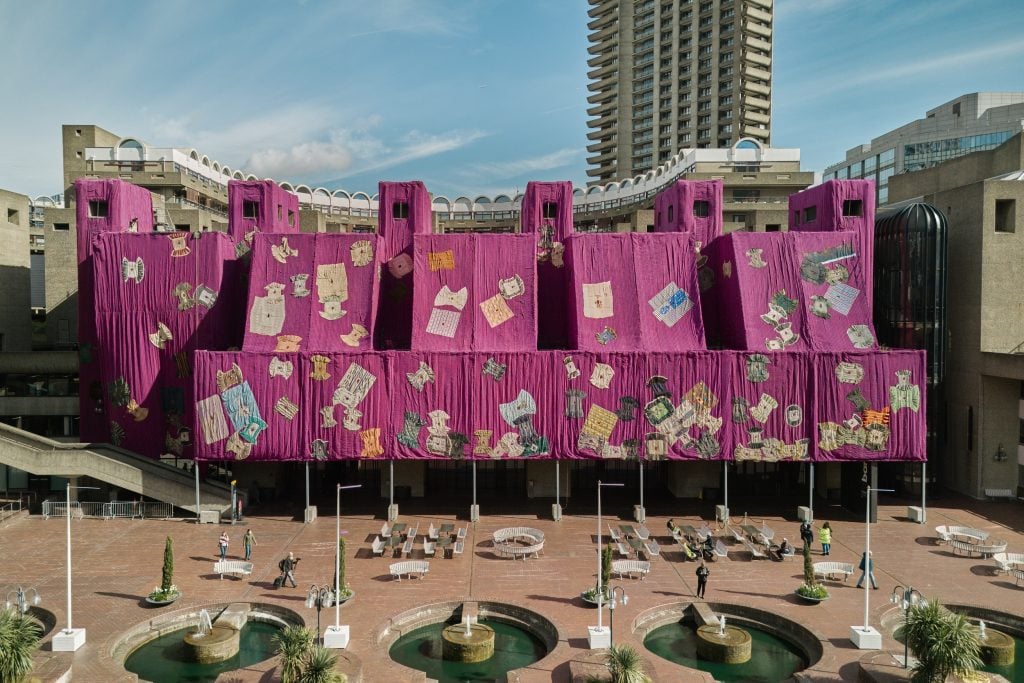
The Barbican's bleak Brutalist facade has received a bright pink makeover courtesy of the Ghanaian artist.

Jo Lawson-Tancred

The beloved lakeside terrace at the Barbican, the most iconic example of midcentury Brutalism in London, has been given a surprising makeover courtesy of Ghanaian artist Ibrahim Mahama. The irrepressibly bleak, fortress-like facade of pocked concrete has been dressed up in an eye-catching pink and purple textile handcrafted by artisans from the city of Tamale in Ghana. Due to its vast size of 6,560 feet square alone, the fabric has a paradoxically monumental quality.
The underlying material is adorned with about 130 ceremonial robes known as “batakaris,” which have been stitched in a jumbled pattern across the surface. These traditional garments are highly revered pieces that are passed down through the generations. Unlike paintings or sculptures that more often inhabit rarified gallery spaces, these textiles bear the traces of their past, becoming carriers of a communal cultural memory.
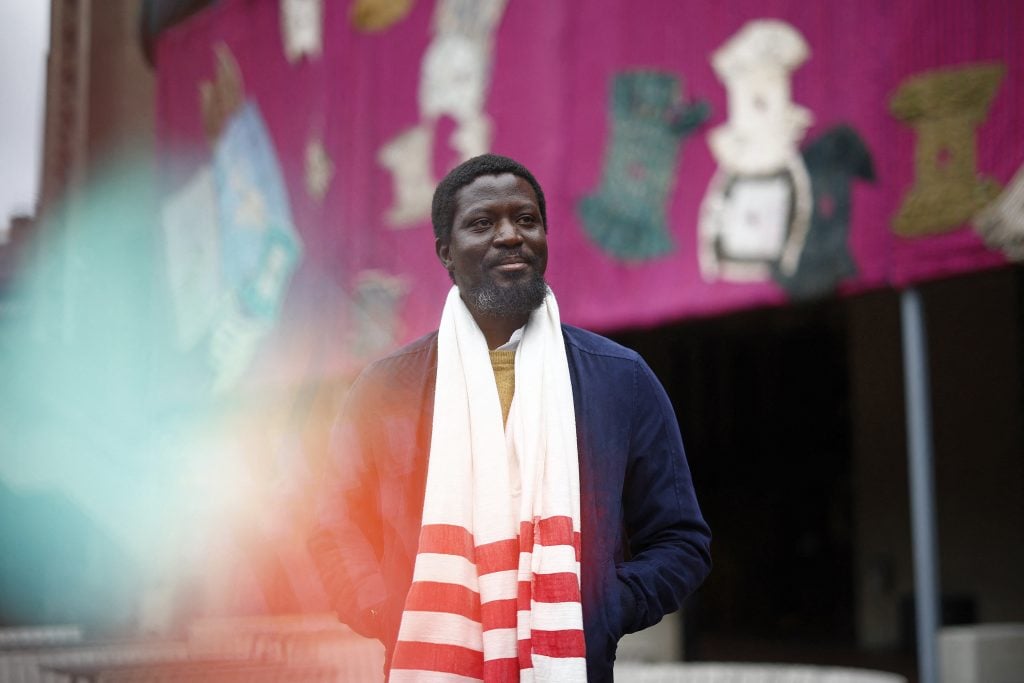
Ghanaian artist Ibrahim Mahama poses in front of his installation Purple Hibiscus at the Barbican on April 9, 2024. Photo: Benjamin Cremel/AFP via Getty Images.
“Collecting the individual smocks from communities can be quite challenging, but also opens up a portal of new formal aesthetics,” acknowledged Mahama.
In order to complete such an ambitious artwork, Mahama employed a far-reaching network of local women weavers. Of course, the production of something so big meant that the project could not take place within the confines of a typical studio. Instead, the artist and his collaborators took over Tamale’s Alui Mahama sports stadium. Mahama explained how this space, “allowed for us to organize the different layers of the work in ways we couldn’t have possibly imagined. The scale of the material forms needed some level of freedom.”
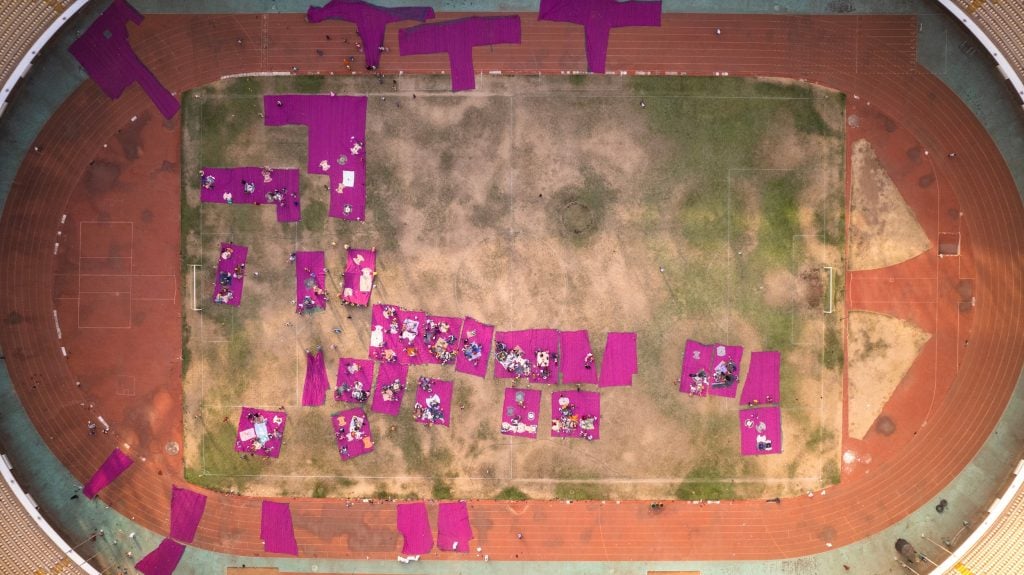
Making of the Ibrahim Mahama, Purple Hibiscus (2023-24). Photo courtesy Ibrahim Mahama, Red Clay Tamale, Barbican Centre, London and White Cube Gallery.
A video recording the process of making the work reveals a highly complex operation relying about 1,000 workers who managed to produce Purple Hibiscus in just seven months. First, long pink and purple threads being woven together into strips of material using large wood and rope contraptions operated by foot peddle. These were later stitched together by hand until large swathes of material could be unspooled, rearranged and sewn into a larger tapestry that begins to slowly fill the stadium’s expanse.
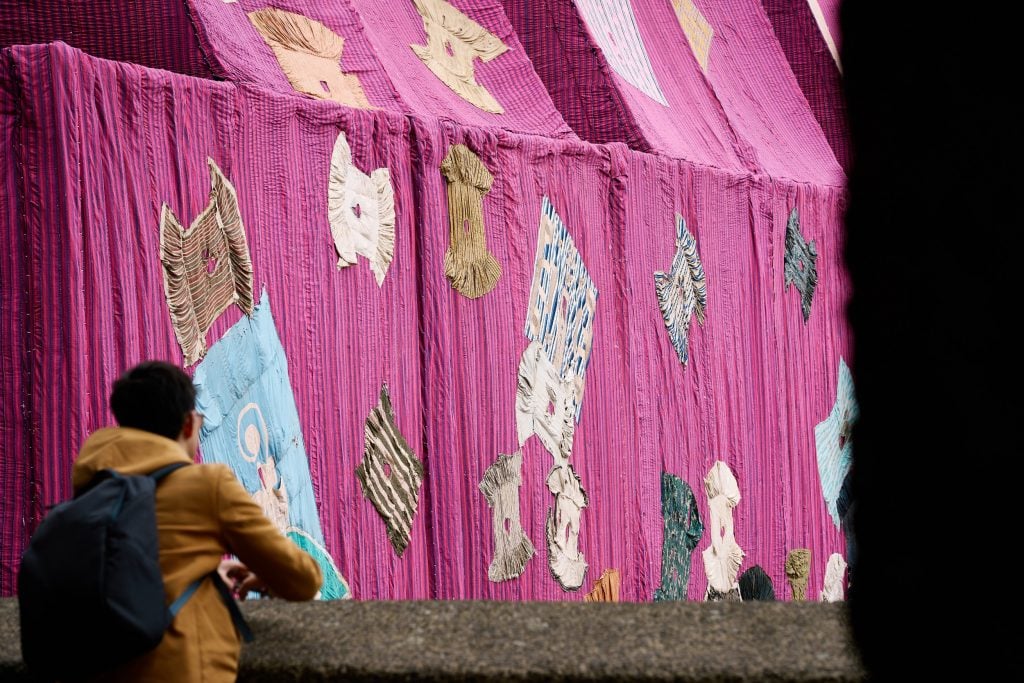 Installation view of “Ibrahim Mahama: Purple Hibiscus” at Barbican Lakeside until August 18, 2024. Photo: © Dion Barrett, courtesy of Barbican Centre.
Installation view of “Ibrahim Mahama: Purple Hibiscus” at Barbican Lakeside until August 18, 2024. Photo: © Dion Barrett, courtesy of Barbican Centre.
The impressive site-specific installation is one of the brighter recent developments for the Barbican’s exhibition “Unravel: The Power and Politics of Textiles in Art,” which was critically acclaimed but besieged by a spate of lenders withdrawing their works after the cultural center became embroiled in a censorship scandal.
With a focus on the transference of intergeneration knowledge, intimately cared for belongings, and the enduring relevance of tradition, Mahama’s contribution to the show seems to offer a more subtle interpretation of the political power of textiles. However, it speaks to the role of fabric in global trade systems, from the use of Chinese threads to the reference to the local London area’s historical associations with the once thriving rag trade.
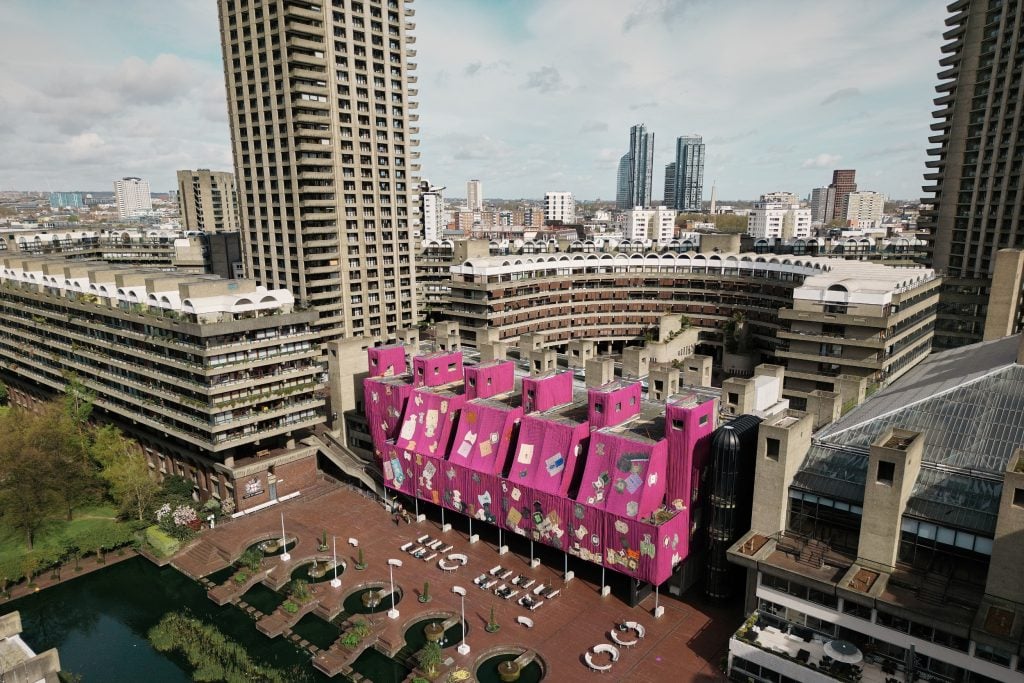
Installation view of “Ibrahim Mahama: Purple Hibiscus” at Barbican Lakeside until August 18, 2024. Photo: © Dion Barrett, courtesy of Barbican Centre.
Mahama, who was born in Tamale in 1987, made his name on the global stage in 2012 with his huge installation of jute sacks – bags used to transport goods like cocoa and rice – covering the National Theatre in Accra. In 2019, he hung 50 national flags on the Rockefeller Center for Frieze New York. After the Barbican commission is deinstalled it will travel back to Ghana where Mahama hopes it can be once again installed as a public artwork.
“Ibrahim Mahama: Purple Hibiscus” is on public view at the Barbican in London until August 18, 2024.